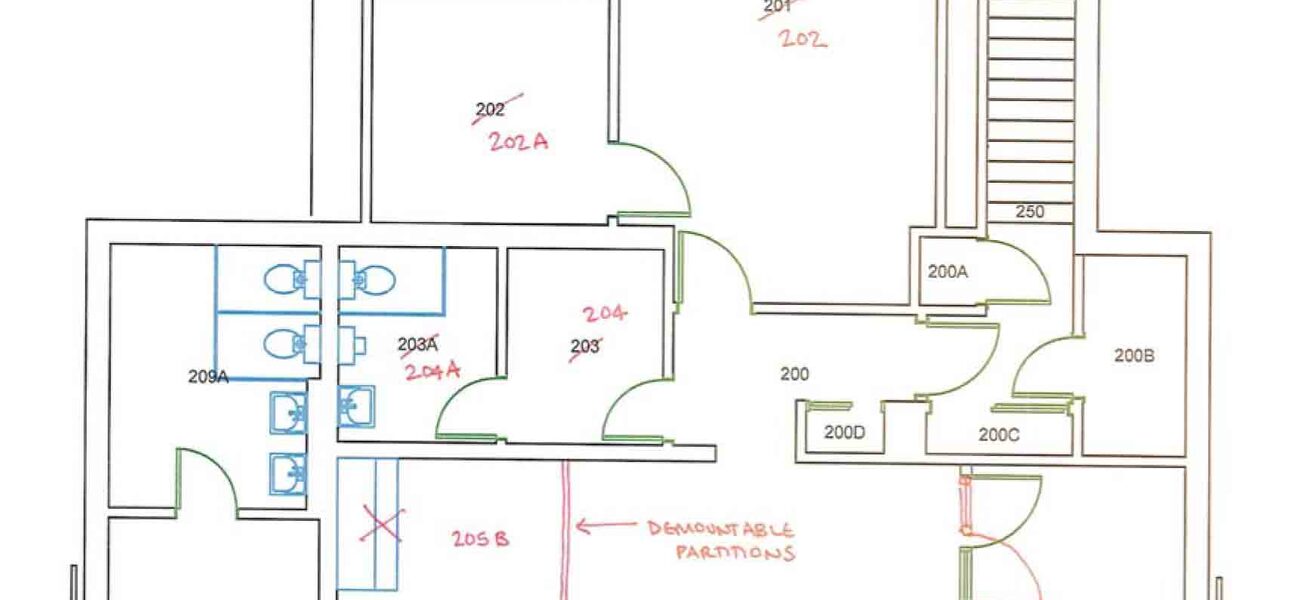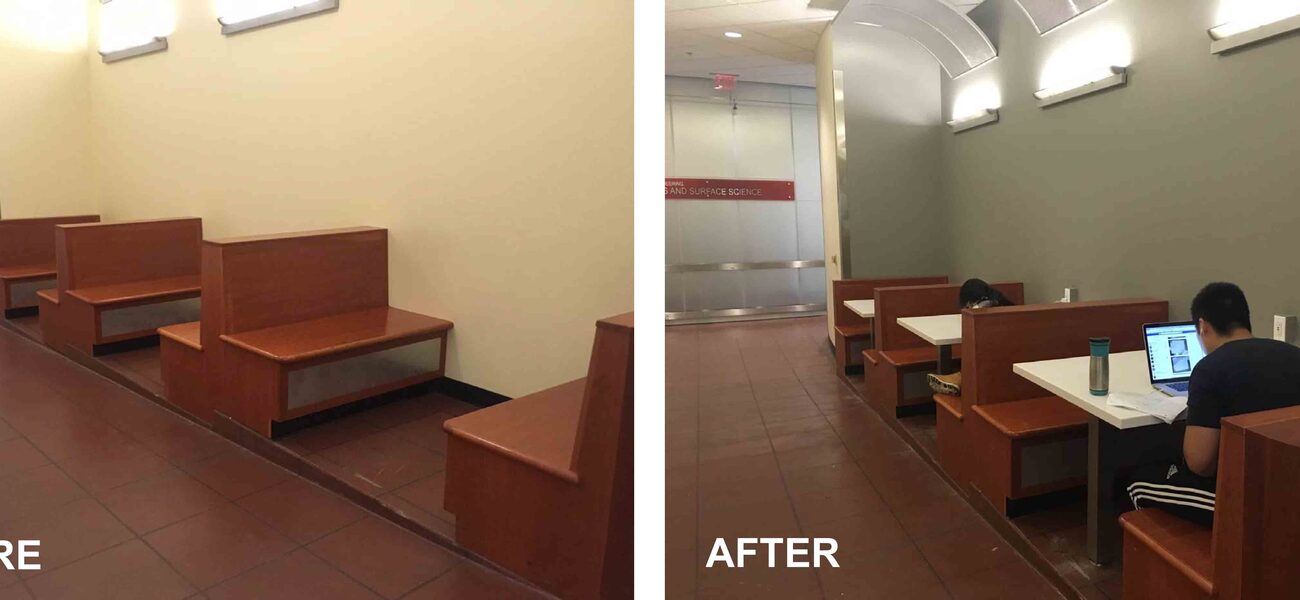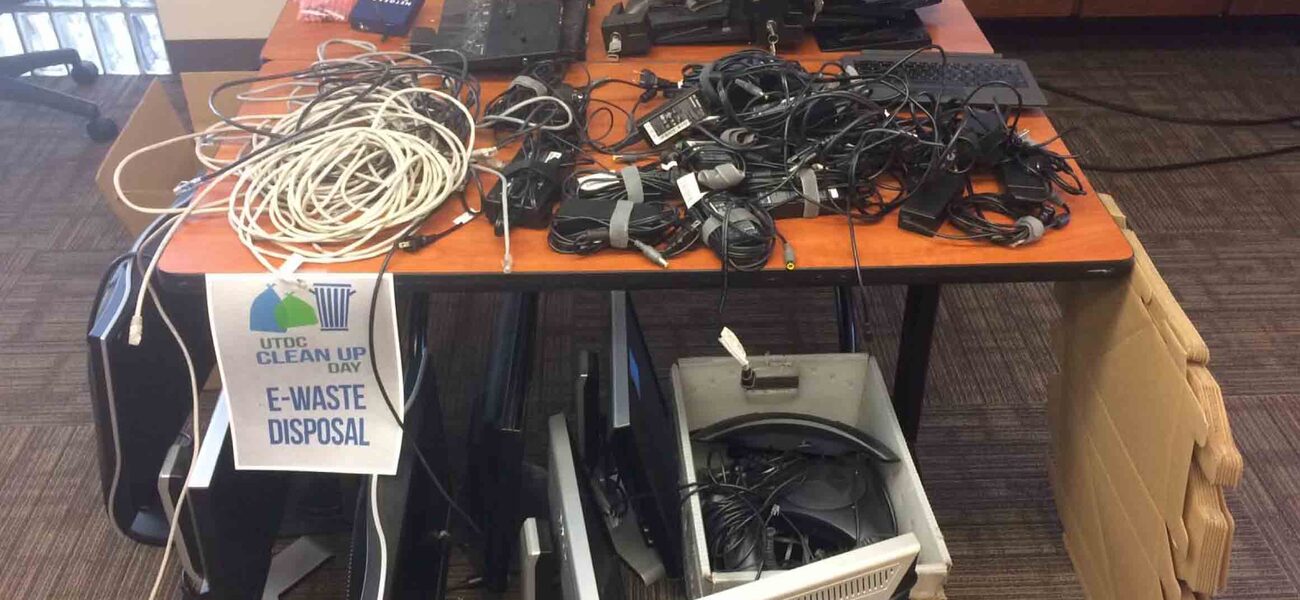Carnegie Mellon University is rethinking the way it approaches change management by broadening how it approaches the people involved. A workspace is not just four walls that contain an employee; there are also memories and a sense of identity tied up in that space. Doing the hard work of acknowledging those feelings, and working closely with employees to address their fear of change, can lay the groundwork for a more successful transition into a new space.
“The mission is to consider how to get people on board with space change by dealing with their sense of identity, memory, and fear,” says Emily Blaze, space planner and project manager for Carnegie Mellon University’s campus design and facility department. “We’re trying to make people more aware, give them more agency, and make change more natural, so that traditional ‘change management’ doesn’t have to occur.”
The Human Factors
The first thing to consider when beginning any space improvement initiative is to think of the “human factors” of change, namely whether the people involved are struggling with complexity, uncertainty, and ambiguity around the project, and whether they are focused on their own self-interest or the larger interests of the group. Reducing the complexity, uncertainty, and ambiguity enables more transparency, understanding, and engagement around how space is used. This can begin with improving data collection, making the information transparent, and developing effective governance. Fortunately, these are largely administrative solutions that can be accomplished with little stakeholder engagement.
When it comes time to consider how space will be allocated, however, it is critical to engage the stakeholders, particularly if there is an imbalance of supply and demand. “In order to achieve a measureable improvement of space utilization—to resolve that imbalance—we have to reckon with people’s emotions, memories, identities, and fears,” says Blaze. “Then they can shift their thinking from self-interest to the interests of the group as a whole.
While space may seem stagnant and impersonal, the opposite is often true. “When you are asking somebody to give up or change or move their space, you may also be asking them to give up a piece of their identity,” she explains. “Until you realize that, you might get a lot of friction in the process.” Asking someone to give up something that seems unimportant to you but is valuable to them creates a barrier to change. For instance, a faculty member who is a principal investigator is in many respects a small business. Their office is their “storefront,” and their access to resources in their department is paramount to their status, ability to recruit, and prospects for growth. In order to make changes, you need to understand their needs.
“How do we better understand and better empathize with what our users are going through, so that we can propose better solutions?” says Blaze. “It boils down to, frankly, just fear,” says Blaze. People are afraid that change will cause them to lose their quality or their productivity. While alleviating this fear will not automatically fix supply and demand imbalances, it will make people be more open to change. Ultimately, this comes from building trust and shared expectations.
There is, however, the underlying risk of being “too empathetic,” asking too many questions, or setting expectations that the budget, or perhaps even the data, cannot support. Blaze counters that while it’s perhaps a precarious situation to be in, it would be worse to not ask the questions at all. “Part of that is addressing our own fears as facility or project managers going into the process,” she says. “What if this doesn’t work? What if it is going to cost more money? What if we can’t provide what these people are asking for? That is something that has to wind up on the table and has to be discussed openly with the group.”
Ultimately, if people can join in shared expectations, it gives them something to be excited about, says Blaze, and prepares them for the actual change management process. “You’re just getting people into the right mindset,” she says. “You are getting people to think about space in a way that is more conducive to change management in the future.”
The “Quick Win” on the Road to Lasting Change
Building trust and shared expectations can take time, “but people want answers now,” says Blaze. The solution is to offer “quick wins,” though she stresses that they must be designed to build a mentality of higher group-interest, and to reduce complexities and ambiguities, all in service to the goal of achieving lasting change. Blaze offers these examples of attainable quick wins:
Enhance the data. The first step that Blaze has employed is to go over the raw space data, and present it in a visual way, simply for the sake of transparency with no ulterior motives. At CMU, she and her team reviewed the floor plans and found that though they were commonly considered to be 95 percent up-to-date, they were only 75 percent accurate. Once issues such as incorrect room numbering and the resulting incorrect assignment of space were corrected, the information was made visual and graphic.
Improve coordination. At CMU, each department has a facility coordinator, and they meet quarterly to share information. They discuss best practices as well as current challenges, and learn about the improvements happening in other areas of the university that could potentially be applied to their own department. Blaze suggests expanding these meetings to also include regular schedulers, so that they could get to know each other and potentially share space more effectively.
Document material retention policies. An important step to retaining more space is to get rid of what is not necessary. In one pilot project, CMU was able to get rid of one ton of paper in the finance building by deciding what paper was necessary to keep and what was not. But it was not paper alone that cluttered what could be usable space: When a staff member gets a new computer, for example, the old computer is removed, but not always the mouse or cables that accompany it. It wasn’t clear to people whether they were allowed to get rid of these components, or how they would dispose of them, so they would simply stockpile them. Blaze developed a forum for people to dispose of electronic equipment, and for the university to take care of it in an environmentally friendly way. That was accompanied by a clearer directive to computing services to remove all components when removing an old computer. This lowers the complexity by fixing the problem of old equipment piling up, and dispels of the ambiguity of how to dispose of it.
Code of conduct agreements. While creating shared spaces is a goal of CMU, there are ramifications, chiefly that not everyone treats the spaces with the same respect. To work around this, CMU has begun implementing codes of conduct, such as the “Reasonable Person Principle,” in CMU’s School of Computer Science. Elsewhere on campus, for example in conference rooms, people are asked to take everything with them when they leave, push in their chairs, and turn off the lights and AV. “It is amazing how just putting some very simple rules of engagement in place can already start to get people in a different frame of mind,” says Blaze.
Beyond Administrative Changes
Although it’s imperative to begin the administrative tasks of building trust and shared expectations, physical alterations are also important to show that there are real changes in the works. For example, as part of the Nicer Nooks Initiative, Blaze redesigned a chronically underutilized space that had wooden benches facing each other, and nothing else. By investing only $10,000, tables and charging stations were added, and the walls were repainted, transforming what had been wasted space into a highly utilized work area. The feedback has been so positive that 10 similar projects will be carried out across the campus.
There are limits to how far people can be expected to change their perceptions and how far space efficiency can be pushed. For example, Blaze believes that tenured faculty should retain their own private office, but there may be efficiency gains in reducing the size of the office. “It’s a shorter mental leap to propose reducing the size of a private space than forcing faculty to share offices,” says Blaze. That recaptured square footage might then be used for more meeting, lab, or student space.
Another issue was the introduction of glass on office doors in a new building. Although necessary to get light to the rooms that are located in the building’s interior, many researchers disapproved of the change. Further discussions revealed that they were concerned with the visual distraction the glass caused. In response, film has been placed on all of the glass.
By continuing to communicate with those impacted by change, Blaze’s empathetic ideals will pave the way for meaningful change when the time comes.
By Anita Woofenden


